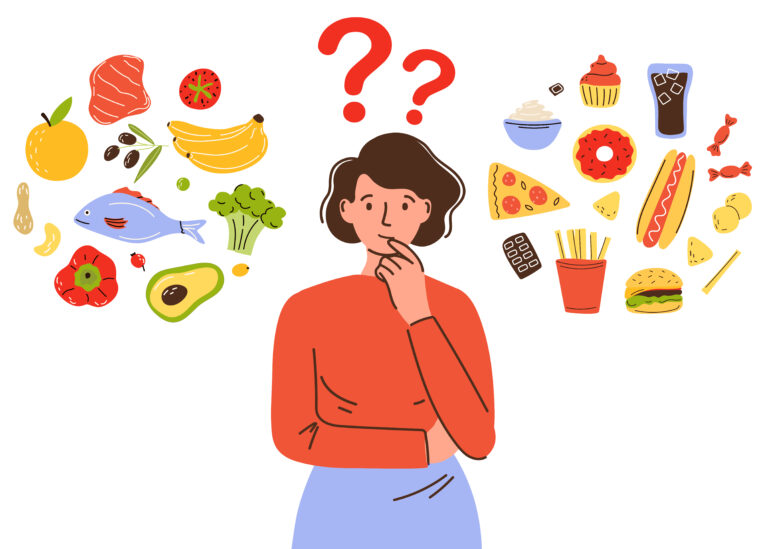In a world where super-sized meals and endless buffets have become the norm, it’s no wonder that maintaining a healthy weight and lifestyle can be a challenge. Overeating is a common problem, and it’s a significant contributor to the obesity epidemic.
Fortunately, the solution to this problem is as simple as it is effective: portion control. In this comprehensive guide, we’ll explore the problem of overeating and unveil the secrets of portion control, empowering you to make healthier choices and create sustainable eating habits that will lead to a happier and more balanced life.
The Overeating Epidemic
Overeating is a widespread issue with serious consequences for our health and well-being. When we consume more calories than our bodies need, the excess is stored as fat, leading to weight gain and a host of associated health problems. Overeating can also contribute to a sense of guilt, discomfort, and a negative relationship with food.

Picture this: You’re sitting in a bustling restaurant with your friends, enjoying a delicious meal. The plates arrive, filled to the brim with mouthwatering dishes.
As the conversation flows and laughter fills the air, you continue to eat. But here’s the catch—your body stopped needing food a while ago. You’re not eating because you’re hungry; you’re eating because the food is there.
This scenario is not unique; it’s a common occurrence in our food-centric culture. Large portions have become the norm, and we’ve been conditioned to clean our plates, even when we’re already full. As a result, overeating has become a prevalent issue, contributing to the obesity epidemic.
Portion Control
Portion control is the key to overcoming the problem of overeating. By understanding and implementing this concept, you can enjoy your favorite foods while maintaining a healthy diet. Let’s delve into the secrets of mastering portion control and creating lasting healthy eating habits.

Rare Fact: In the early 20th century, portions served in restaurants were significantly smaller than today’s servings. Over time, the trend toward larger portions has contributed to overeating.
Mindful Eating: Savor Every Bite
Imagine savoring a single piece of exquisite dark chocolate. You roll it on your tongue, exploring the flavors and textures.
This is the essence of mindful eating. When you’re fully present during your meal, enjoying the taste, texture, and aroma of your food, you’re less likely to overeat. Mindful eating allows you to recognize when you’re satisfied and prevents mindless munching.
Plate Size Matters
In a fascinating experiment, researchers provided two groups of people with different-sized bowls of tomato soup. Those with the larger bowls ate 73% more soup than those with the smaller bowls. This phenomenon illustrates how our perception of portion size can influence our eating behavior.
Rare Fact: Researchers have found that downsizing your plates can naturally limit your food intake, leading to better portion control and reduced calorie consumption.
Balanced Meals: The Power of Proportion
A well-balanced meal provides your body with the necessary nutrients and reduces the temptation to overeat. Imagine your plate divided into sections: half filled with colorful vegetables, a quarter with lean protein, and the remaining quarter with whole grains.
This balanced proportion ensures you’re getting a variety of nutrients and helps prevent overconsumption of any single food group.
Rare Fact: The concept of balanced meals has deep roots in traditional dietary patterns worldwide. Whether it’s the Japanese bento, the Mediterranean mezze, or the Indian thali, many cultures have long embraced the idea of well-proportioned meals.
Pre-Portioned Snacks: Out of Sight, Out of Mind
It’s a familiar scenario: You’re engrossed in a movie, and that bag of chips or box of cookies is within arm’s reach.
You munch mindlessly as the plot unfolds. To combat this tendency, pre-portion your snacks into smaller containers. By creating individual servings, you can prevent mindless munching and stick to appropriate portions.
Rare Fact: The concept of pre-portioned snacks has ancient origins in the bento boxes of Japan, where a variety of small, beautifully presented portions are carefully arranged to create a visually appealing and satisfying meal.
Listen to Hunger Cues

Our bodies are equipped with an incredible signaling system that communicates when it’s time to eat and when it’s time to stop. By paying attention to your body’s hunger and fullness cues, you can develop a healthier relationship with food and avoid overeating.
Imagine if everyone would listen to their bodies. When hunger strikes, we eat, enjoying each bite until we’re satisfied. It’s a simple and intuitive approach, yet it can have a profound impact on our eating habits.
Rare Fact: Hunger cues are regulated by a complex interplay of hormones in your body. Leptin, often called the “satiety hormone,” signals your brain when you’re full, while ghrelin, known as the “hunger hormone,” communicates when it’s time to eat.
Slow Down: The Art of Enjoyment
In our dynamic world, meals are often found to be rushed affairs. We eat quickly, multitasking or on the go, without truly savoring the experience.
But eating too quickly can lead to overconsumption because it takes time for your body to register fullness. Slowing down and enjoying your food can help you recognize when you’re satisfied and prevent overeating.
Think about the last time you enjoyed a leisurely meal. Perhaps you were on vacation, sitting at a quaint cafe, savoring each bite. It’s not just the food itself that makes these moments special; it’s the experience of eating slowly and deliberately.
Rare Fact: In Japan, the practice of eating mindfully is known as “hara hachi bu,” which translates to “eat until 80% full.” It’s a cultural practice on the island of Okinawa, where people have some of the highest life expectancies in the world.
Smaller Servings at Restaurants: A Wise Dining Strategy
Restaurant portions have grown significantly in size over the years, often providing far more food than our bodies need.
When dining out, consider sharing an entrée with a dining companion or ordering an appetizer as your main course. These strategies allow you to enjoy restaurant cuisine while managing portion sizes.
Rare Fact: In France, it’s considered a culinary faux pas to ask for a “doggie bag” to take home leftovers. The French approach to dining emphasizes savoring smaller, well-proportioned portions.
Keep Temptation at Bay
An organized kitchen can be a powerful tool for portion control. Store tempting, unhealthy snacks out of sight, and keep healthier options readily accessible. This simple change can make a significant difference in your overall eating habits.
Rare Fact: The concept of keeping unhealthy temptations out of sight is linked to the “nudge theory,” which suggests that small changes in the environment can influence people’s decisions.
Educate Yourself

Understanding proper portion sizes can be a game-changer in your quest for healthy eating habits. Familiarize yourself with recommended portion sizes for different food groups and use measuring cups or a kitchen scale until you develop an intuitive sense of portion control.
Rare Fact: In the early 20th century, nutrition education programs were introduced in schools in the United States, teaching children about healthy eating and portion sizes. This marked the beginning of widespread nutritional awareness.
Mastering Portion Control for a Healthier Life
Portion control is not about deprivation; it’s about making mindful choices that lead to a healthier, more balanced life. By incorporating these strategies into your daily routine, you can take control of your eating habits and achieve lasting well-being.
Remember, it’s not just what you eat that matters; it’s also how much you eat. With the power of portion control, you can savor the flavors of life without overindulging, and embark on a journey to a healthier and happier you.






